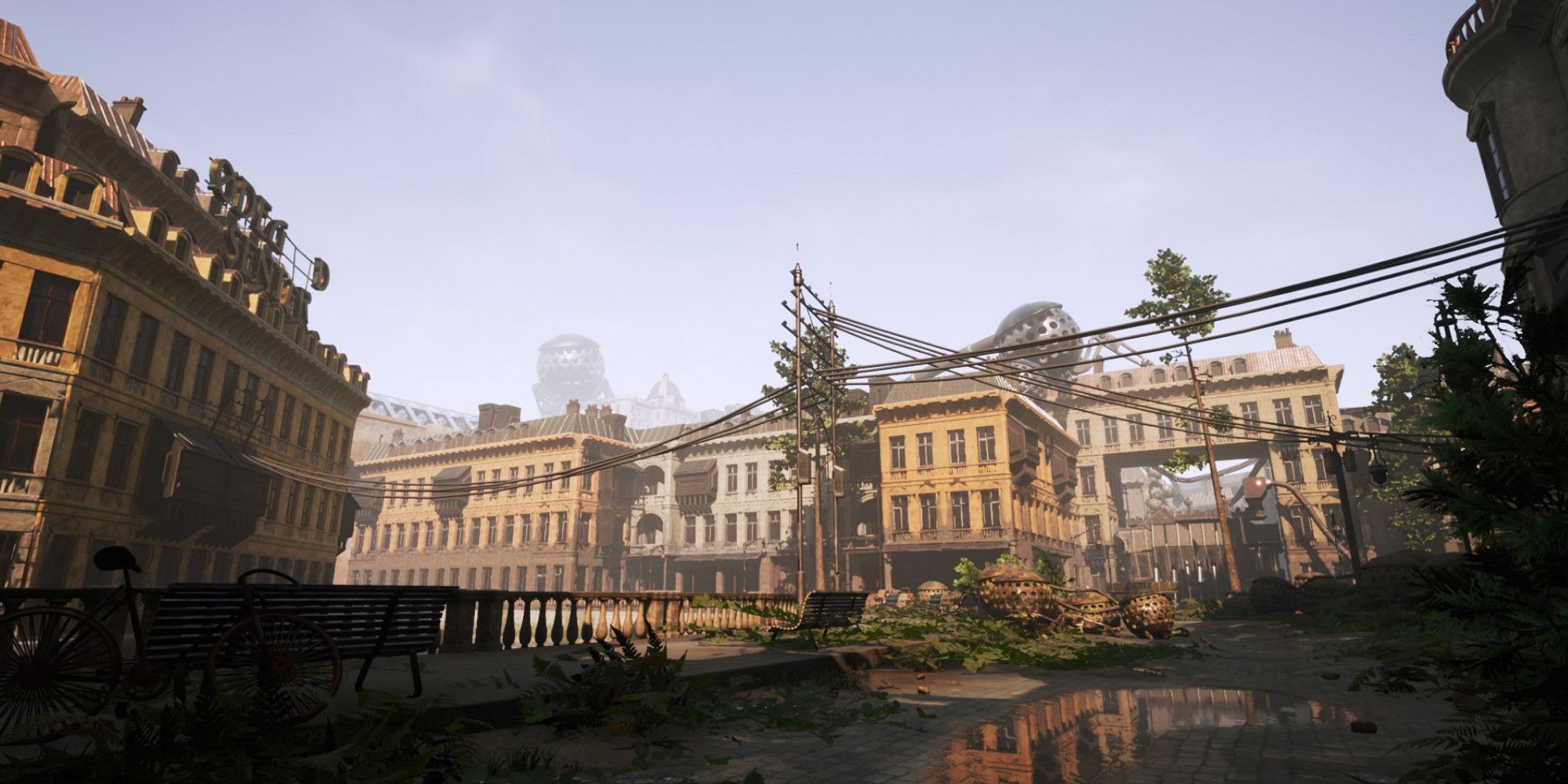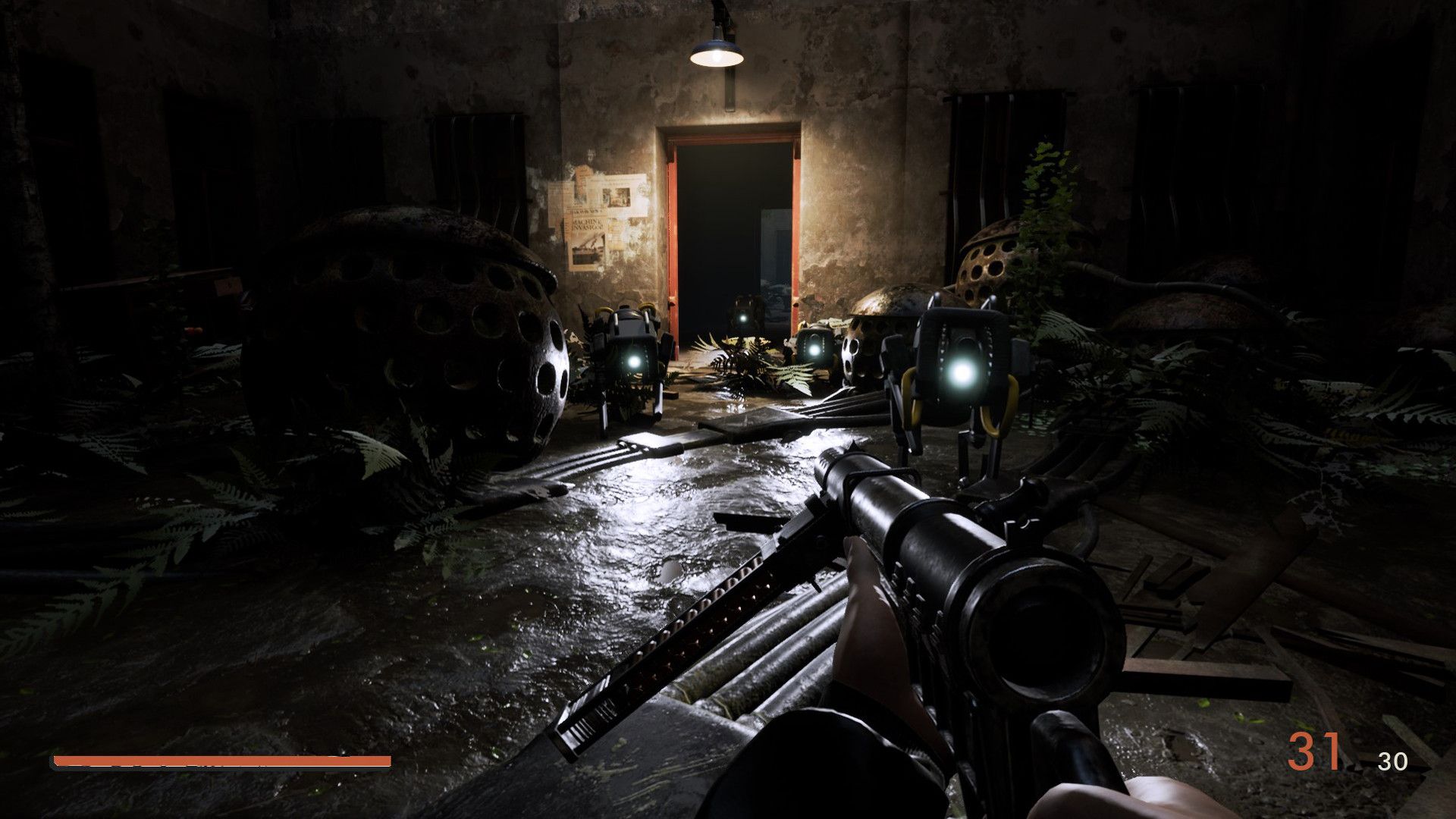I haven’t played a shooter as intensely focused as Industria since perhaps Titanfall 2 - though that may be the only thing those games have in common. Rather, Industria is a throwback to the 2000's era of narrative-focused shooters like Half-Life 2 and Bioshock that were more concerned with atmosphere, world-building, and exploration than fast-paced action. Industria doesn’t waste a single moment of its four hour run-time - which is something a busy gamer like me has come to really appreciate. It also happens to be one of the best looking games of the year, thanks to some impressive RTX implementation. As if all that wasn’t enough, it’s got some of the best voice performances I’ve heard, maybe ever. Industria is bound to get lost in a sea of major releases this month, but if you’ve got a few hours to spare in the coming weeks, you’ll be seriously missing out if you don’t pick this one up.
Industria begins in East Berlin during the fall of the Berlin Wall. Afraid of the consequences this will have for his secret science and research facility, your partner escapes into an alternate reality version of Berlin. You follow him, but arrive some 20 years later to find an abandoned city overrun by humanoid robots. Your journey to find the man that supposedly caused this - or perhaps tried to stop it - will take you on a journey across the city and eventually into the outskirts where you’ll fight robots, solve puzzles, and, piece by piece, unravel the mysteries of this strange new world.
Like both Half-Life and Bioshock, Industria blends sci-fi, fantasy, and horror to create a captivating world that is entirely its own. The vacant streets and treacherous, dilapidated buildings give off such a strong sense of purpose and permanence that it’s hard not to feel transported just looking at them. Bleakmill’s environmental artist is a master with lighting and shadows - particularly with the benefit of ray-traced reflections - and I found myself constantly in awe while playing Industria, just looking around every rubble-filled alleyway and half-demolished apartment with my jaw on the floor.
Gameplay is very close to a Half-Life 2 experience, which is as refreshing as it is nostalgia-inducing. The only progression system to speak of is through collecting a small arsenal of guns as you make your way across the city. You’ll need to scour each area for precious ammo, following circuitous pathways through buildings and around the widespread destruction. You’ll occasionally be stopped by a puzzle that briefly sends you backtracking to find a tool or key, but progress is never interrupted for long. Industria has a lot to show off in a short amount of time, and it does an exceptional job of keeping things always moving forward.
The robots scattered around the city are consistent with the Cold War era aesthetic and 20th-century visions of automatons, but they’re terrifying enemies nonetheless. Your pickaxe can make short work of them if you’re willing to get in close, while bullets tend to glance off of their metal frames in a believable way until you put enough damage in to fell them. The fights are intense and often leave you without a single bullet left, even if you’re trying to be conservative with ammo. Hard mode can really make it feel like a survival game too, if you’re looking for more of a challenge.
While Industria feels tailor-made for classic story-shooter fans, there’s one aspect of it that I suspect will be fairly divisive. Several times between chapters, and particularly at the end, you’re transported to yet another alternate reality. These brief excursions to a black-and-white world are essentially dream sequences that are as terrifying as they are confusing. There’s a David Lynch quality to these liminal spaces that also evoke Remedy’s Control and, unsurprisingly, the ending of Half-Life: Alyx. I hate to spoil what happens in these sequences because I found a lot of joy in the “what the fuck” of it all, but I can see some people getting really turned off by it. The ending definitely leaves you with more questions than answers, so don’t go in expecting some kind of grand Andrew Ryan-esque reveal. Industria is all about the journey, and the journey is a worthwhile one.
This is a game where every single element seemed to come together perfectly, and the fact that it was created by a team of just five developers is hard to believe. I could go on and on about the emotionally compelling performances from the voice cast or the strange, melancholic soundtrack that adds so much to the tone and atmosphere of the game, but at this point I think I’ve sold it as much as I possibly can. Like its parallel universe Berlin, Industria is a familiar type of game that somehow manages to be completely original. It’s set up as the start of something much bigger, and I sincerely hope we get to see Bleakmill bring more of this world to life in the future. If you long for the days of cinematic shooters, enjoy the Weird Fiction genre, or just want to see something beautiful on your RTX graphics card, you’ve got to play Industria as soon as possible.


